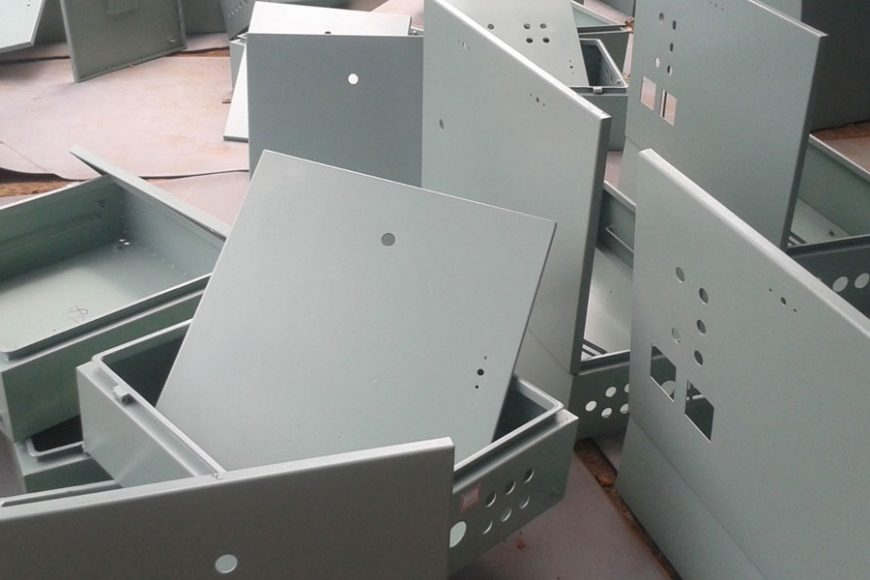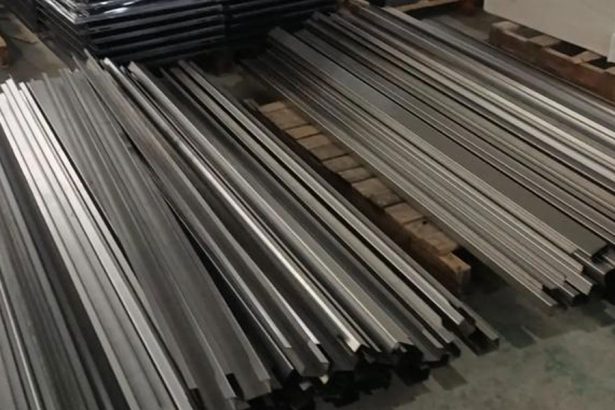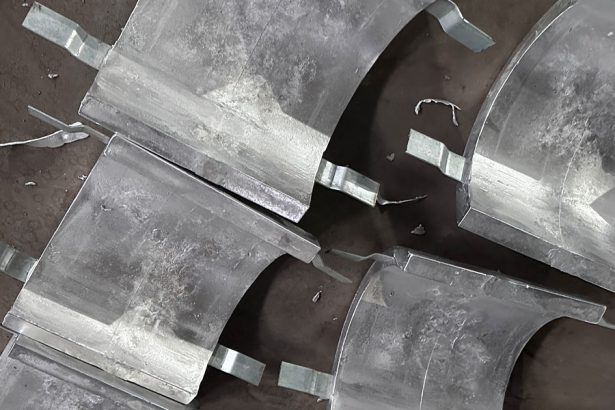Sheet metal forming is a cornerstone of modern manufacturing, enabling the production of complex components used in industries ranging from automotive and aerospace to electronics and construction. A critical aspect of this process is determining the initial blank shape and size—known as blank expansion calculation—which directly influences material utilization, forming accuracy, and production efficiency. The blank expansion calculation method involves predicting the unfolded geometry of a sheet metal part prior to forming, ensuring that the final deformed shape matches the desired design with minimal waste and defects. Over the decades, significant research progress has been made in refining these methods, transitioning from empirical approximations to sophisticated computational models. This article explores the evolution, theoretical underpinnings, and recent advancements in blank expansion calculation methods for sheet metal parts, emphasizing their scientific rigor and practical applications.
The concept of blank expansion stems from the need to transform a three-dimensional (3D) formed part back into a two-dimensional (2D) flat blank. Historically, this task relied heavily on trial-and-error approaches, where skilled craftsmen iteratively adjusted blank shapes based on physical prototypes. Such methods, while effective for simple geometries, proved inadequate for the increasingly complex designs demanded by modern engineering. The advent of analytical and numerical techniques marked a paradigm shift, enabling researchers to model the deformation mechanics of sheet metal with greater precision. These developments were driven by advances in material science, computational power, and experimental validation, which collectively elevated blank expansion from an art to a science.
The earliest documented approaches to blank expansion calculation emerged in the mid-20th century, coinciding with the rise of mass production in industries like automotive manufacturing. Engineers employed geometric approximations, such as the radial length method, to estimate the blank shape for simple cylindrical or conical parts. This method assumed that the sheet metal stretched uniformly along radial lines emanating from a central point, preserving the length of these lines in the flat state. For a cylindrical cup, for instance, the blank diameter D D D could be approximated as D=d2+4dh, where d d d is the cup diameter and h h h is its height. While effective for basic shapes, this approach neglected material thinning, strain distribution, and anisotropic properties, leading to inaccuracies for parts with irregular contours or significant thickness variations.
As manufacturing demands grew, researchers sought to incorporate material behavior into blank expansion models. The introduction of plasticity theory provided a theoretical framework for understanding how sheet metal deforms under tensile and compressive stresses. In the 1960s, the sine law emerged as a key tool for analyzing stretch forming processes, particularly in incremental sheet metal forming. The sine law relates the wall thickness t t t of a formed conical part to its initial thickness t0 t_0 t0 and the half-apex angle θ \theta θ via the equation t=t0sin(θ). This relationship highlighted a critical limitation: as θ \theta θ approaches zero, the wall thickness theoretically approaches zero, indicating a forming limit beyond which fracture occurs. This insight spurred investigations into forming limit diagrams (FLDs), which map the maximum strains a material can withstand before necking or failure, further refining blank expansion predictions.
The 1970s and 1980s saw the integration of finite element analysis (FEA) into sheet metal forming research, revolutionizing blank expansion calculations. FEA allowed researchers to simulate the deformation process by discretizing the sheet into small elements, solving equilibrium equations based on material constitutive models. Early FEA models, such as those developed by Zienkiewicz and Taylor, relied on isotropic yield criteria like the von Mises model, which assumes uniform material properties in all directions. For a typical blank expansion simulation, the initial blank shape was iteratively adjusted until the simulated deformed geometry matched the target part within acceptable tolerances. This trial-and-error approach, while computationally intensive, offered a significant leap over analytical methods, particularly for complex parts with non-uniform strain distributions.
A notable milestone in this period was the work of Hill (1979), who proposed an anisotropic yield criterion to account for the directional properties of rolled sheet metal. Unlike isotropic models, Hill’s criterion introduced parameters to describe varying yield strengths along the rolling, transverse, and thickness directions, improving the accuracy of blank expansion for materials like steel and aluminum alloys. The yield function can be expressed as:
F(σx−σy)2+G(σy−σz)2+H(σz−σx)2+2Lτyz2+2Mτzx2+2Nτxy2=1,
where F,G,H,L,M,N F, G, H, L, M, N F,G,H,L,M,N are anisotropy coefficients determined experimentally, and σx,σy,σz,τyz,τzx,τxy are stress components. This model enabled researchers to predict blank shapes for parts with planar anisotropy, such as deep-drawn automotive panels, where earing (non-uniform flange height) is a common defect.
The 1990s marked a shift toward inverse finite element methods (IFEM), which streamlined blank expansion by directly computing the initial blank shape from the final part geometry. Unlike forward FEA, which simulates the forming process from blank to part, IFEM works backward, minimizing the computational cost of iterative adjustments. Lee and Huh (1997) pioneered this approach, using a finite element inverse method with an initial guess based on linear deformation theory. Their algorithm calculated the blank shape by solving a system of nonlinear equations derived from the equilibrium and compatibility conditions, achieving convergence within a few iterations. For a rectangular box, the blank dimensions were adjusted to account for corner stretching and sidewall thinning, reducing material waste compared to traditional circular blanks.
Concurrent with IFEM, geometric mapping techniques gained traction as a computationally efficient alternative. These methods project the 3D part surface onto a 2D plane using triangulation or mesh-based algorithms, preserving surface area or radial lengths. Chen and Lan (2007) developed a cross-sectional surface development method, dividing the part into discrete sections and unfolding each section based on its curvature and strain state. This approach proved effective for shallow rectangular shells, where overlapping issues in standard radial methods often led to errors. The blank shape was calculated as a series of connected triangles, with edge lengths adjusted to reflect material stretching and bending effects.
The advent of high-performance computing in the 2000s further accelerated progress, enabling the integration of advanced material models and optimization algorithms into blank expansion calculations. Barlat’s Yld2000-2d yield function, for instance, offered a more accurate description of anisotropic behavior in aluminum alloys, incorporating 18 parameters fitted to experimental data. This model, expressed as:
ϕ=∣σ1−σ2∣a+∣σ1+σ2∣a=2σˉa,
where σ1,σ2 \sigma_1, \sigma_2 σ1,σ2 are principal stresses, σˉ \bar{\sigma} σˉ is the effective stress, and a a a is a material-dependent exponent, improved predictions for complex parts like automotive hoods. Coupled with genetic algorithms (GAs) or response surface methodology (RSM), researchers optimized blank shapes to minimize defects such as wrinkling, tearing, and excessive thinning.
Recent advancements have focused on hybrid methods that combine analytical, numerical, and experimental approaches. Ding and Shi (2009) proposed a hybrid radial length normal spreading method, addressing the limitations of standard radial expansion for severely curved parts. By incorporating outside normal directions and orthogonal length development, this method avoided overlapping and ensured accurate blank shapes for shallow rectangular shells. The process involved discretizing the part into triangular elements, calculating the normal vector at each node, and adjusting the blank geometry iteratively based on strain energy minimization. Experimental validation using aluminum AA6014 sheets demonstrated a 10% improvement in dimensional accuracy over traditional methods.
Another significant development is the application of machine learning (ML) to blank expansion. In 2020, researchers began exploring artificial neural networks (ANNs) to predict blank shapes based on training data from FEA simulations and experimental trials. ANNs model the nonlinear relationship between part geometry, material properties, and blank dimensions, offering rapid predictions without the need for extensive simulations. For a square conical box, an ANN trained on parameters such as apex angle, wall height, and material thickness achieved a prediction error of less than 2%, rivaling the accuracy of FEA while reducing computation time by orders of magnitude.
Incremental sheet metal forming (ISF) has also influenced blank expansion research, particularly for rapid prototyping and small-batch production. ISF involves deforming the sheet step-by-step using a single-point tool, allowing complex shapes to be formed without dedicated dies. The sine law remains a cornerstone of ISF blank calculations, but recent studies have extended it to account for tool path effects and multi-stage forming. For instance, a square conical box formed via ISF requires a blank shape that accommodates localized stretching near the tool head, with the forming limit determined by the half-apex angle beyond which fracture occurs. Experimental results from 2021 showed that a blank designed with a 15% oversize margin improved formability compared to exact geometric predictions.
To compare these methods systematically, Table 1 summarizes key blank expansion techniques, their theoretical bases, advantages, and limitations.
Table 1: Comparison of Blank Expansion Calculation Methods
| Method | Theoretical Basis | Advantages | Limitations | Accuracy | Computational Cost |
|---|---|---|---|---|---|
| Radial Length Method | Geometric approximation, uniform stretching | Simple, fast for basic shapes | Ignores anisotropy, thinning | Low (±10%) | Low |
| Sine Law | Plasticity theory, stretch forming | Predicts thinning, forming limits | Limited to conical shapes | Moderate (±5%) | Low |
| Forward FEA | Numerical simulation, isotropic/anisotropic | High accuracy for complex parts | Iterative, computationally intensive | High (±2%) | High |
| Inverse FEA (IFEM) | Backward simulation, equilibrium equations | Faster than forward FEA, precise | Requires initial guess, complex setup | High (±1.5%) | Moderate |
| Geometric Mapping | Surface projection, triangulation | Efficient, good for shallow parts | Overlapping issues for curved surfaces | Moderate (±4%) | Low |
| Barlat Yld2000-2d + Opt. | Advanced anisotropy, optimization | Handles complex anisotropy, optimized | Data-intensive, requires calibration | Very High (±1%) | High |
| Hybrid Normal Spreading | Radial + orthogonal development | Avoids overlapping, versatile | Limited validation for deep drawing | High (±2%) | Moderate |
| Machine Learning (ANN) | Data-driven, nonlinear regression | Rapid, scalable, minimal simulation | Requires training data, less interpretable | Very High (±1-2%) | Low (post-training) |
The choice of method depends on the part geometry, material properties, and production constraints. For simple cylindrical parts, the radial length method suffices, while complex automotive components benefit from FEA or ML approaches. Table 2 illustrates the applicability of these methods to specific part types, based on recent literature.
Table 2: Applicability of Methods to Sheet Metal Part Types
| Part Type | Recommended Method | Material Example | Key Considerations | Reported Error |
|---|---|---|---|---|
| Cylindrical Cup | Radial Length, Sine Law | Steel DC01 | Uniform stretching, minimal anisotropy | ±5-10% |
| Square Conical Box | IFEM, Hybrid Spreading | Aluminum AA6014 | Corner stretching, thinning | ±2-4% |
| Automotive Hood | Barlat Yld2000-2d + GA | Aluminum 2048 | Anisotropy, large surface area | ±1-2% |
| Shallow Rectangular Shell | Geometric Mapping, Hybrid | Steel X40MnCrAlV19-2 | Curvature, overlapping prevention | ±3-5% |
| Prototype Complex Part | ML (ANN), ISF Adjustments | High Manganese Steel | Rapid iteration, localized deformation | ±1-3% |
Experimental validation remains a critical component of blank expansion research. Techniques such as circle grid analysis, where a grid is etched onto the blank and its deformation tracked post-forming, provide empirical data to refine models. Recent studies using digital image correlation (DIC) have enhanced this process, offering full-field strain measurements with sub-millimeter resolution. For instance, a 2023 experiment on a deep-drawn cup showed that IFEM predictions aligned with DIC strain maps within 1.8%, validating its use for high-precision applications.
The integration of Industry 4.0 technologies, such as real-time process monitoring and adaptive control, represents the latest frontier in blank expansion research. Sensors embedded in forming dies can measure strain and thickness variations during production, feeding data into ML models to adjust blank shapes on-the-fly. This closed-loop approach, demonstrated in a 2024 pilot study, reduced material waste by 15% for a batch of steel automotive brackets, highlighting its potential for sustainable manufacturing.
Looking forward, challenges remain in scaling these methods to ultra-thin sheets (e.g., <0.5 mm) and high-strength alloys, where springback and residual stresses complicate blank predictions. Advances in multi-scale modeling, which couple microscale material behavior with macroscopic deformation, may address these issues by capturing grain-level effects. Additionally, the standardization of blank expansion algorithms across software platforms could democratize access to advanced methods, benefiting small and medium enterprises.
In conclusion, the research progress in sheet metal parts blank expansion calculation methods reflects a journey from rudimentary geometric approximations to sophisticated, data-driven solutions. Each advancement—whether analytical, numerical, or experimental—has built upon its predecessors, driven by the dual goals of precision and efficiency. As computational power and material science continue to evolve, these methods will undoubtedly play a pivotal role in shaping the future of sheet metal forming, meeting the demands of an increasingly complex and sustainable industrial landscape.




